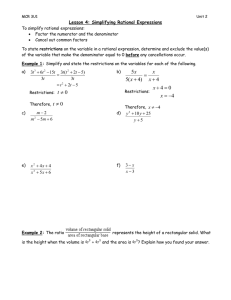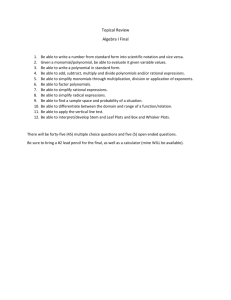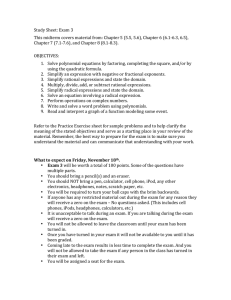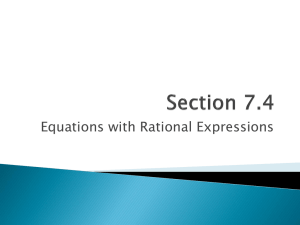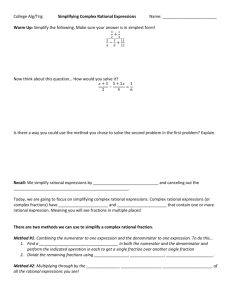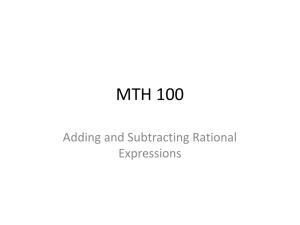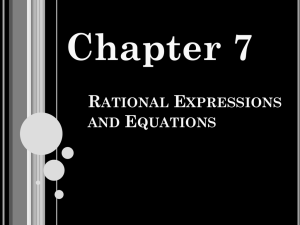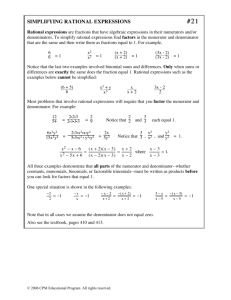Simplifying, Multiplying, and Dividing Rational Expressions Rational Expression
advertisement
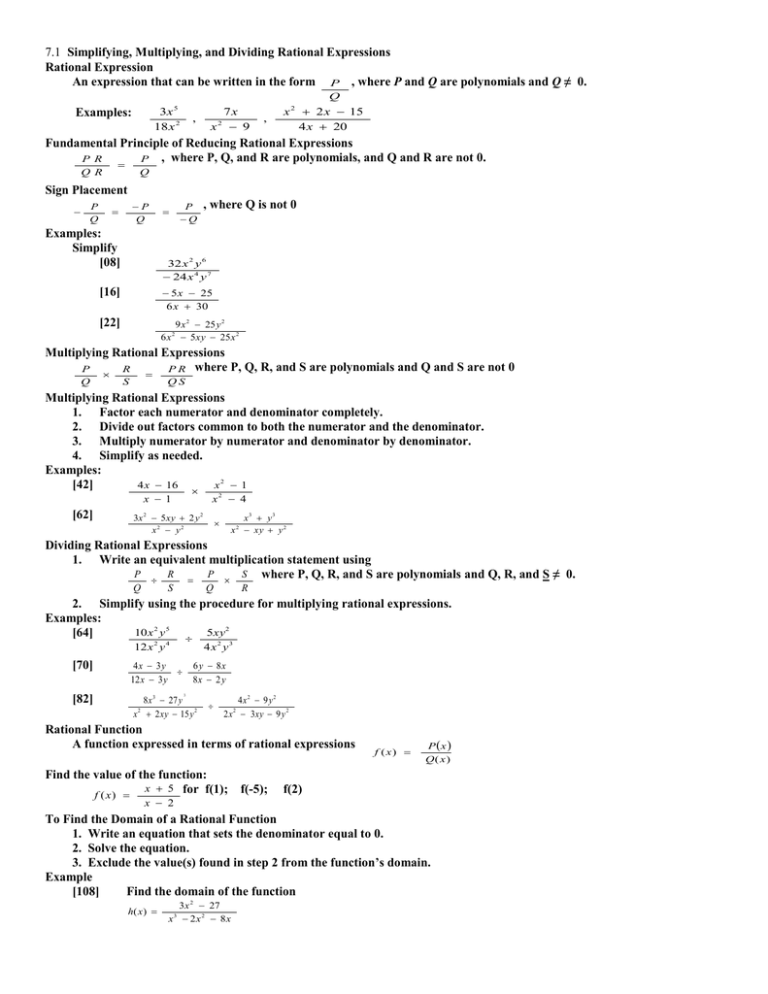
7.1 Simplifying, Multiplying, and Dividing Rational Expressions Rational Expression An expression that can be written in the form P , where P and Q are polynomials and Q ≠ 0. Q 3x 5 18 x 2 Examples: , 7x x2 9 , x 2 2 x 15 4 x 20 Fundamental Principle of Reducing Rational Expressions P R P , where P, Q, and R are polynomials, and Q and R are not 0. Q R Q Sign Placement P Q P Q Examples: Simplify [08] P Q , where Q is not 0 32 x 2 y 6 24 x 4 y 7 [16] 5 x 25 6 x 30 [22] 9 x 2 25 y 2 6 x 2 5 xy 25 x 2 Multiplying Rational Expressions P R P R where P, Q, R, and S are polynomials and Q and S are not 0 Q S QS Multiplying Rational Expressions 1. Factor each numerator and denominator completely. 2. Divide out factors common to both the numerator and the denominator. 3. Multiply numerator by numerator and denominator by denominator. 4. Simplify as needed. Examples: [42] 4 x 16 x2 1 x 1 [62] x2 4 3x 2 5 xy 2 y 2 x2 y2 x3 y3 x 2 xy y 2 Dividing Rational Expressions 1. Write an equivalent multiplication statement using P R P S where P, Q, R, and S are polynomials and Q, R, and S ≠ 0. Q S Q R 2. Simplify using the procedure for multiplying rational expressions. Examples: 10 x 2 y 5 5xy2 [64] 12 x 2 y 4 4x2 y3 [70] 4x 3y 12 x 3 y 6 y 8x 8x 2 y [82] 8 x 3 27 y x 2 2 xy 15 y 2 3 4x2 9 y2 2 x 2 3xy 9 y 2 Rational Function A function expressed in terms of rational expressions Find the value of the function: x 5 for f(1); f ( x) f(-5); f ( x) P x Q( x ) f(2) x 2 To Find the Domain of a Rational Function 1. Write an equation that sets the denominator equal to 0. 2. Solve the equation. 3. Exclude the value(s) found in step 2 from the function’s domain. Example [108] Find the domain of the function h( x ) 3x 2 27 x3 2 x2 8x
